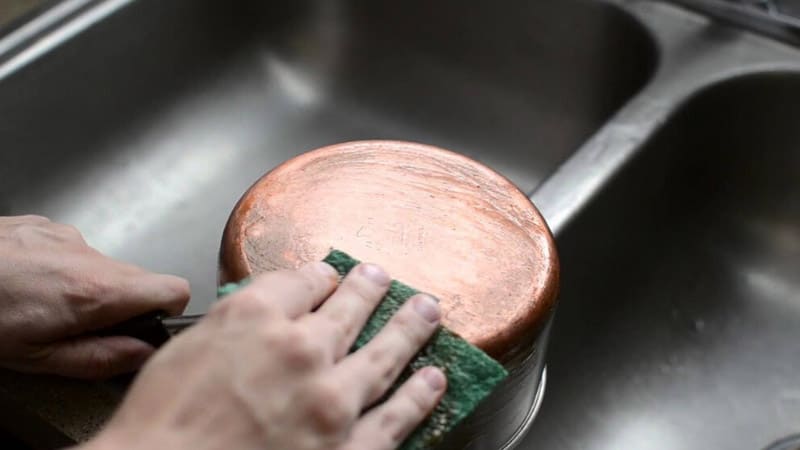
Ultra-durable, can last a lifetime, low maintenance Rustic look, superior heat conduction and responsiveness Hand-wash or dishwasher, lower maintenanceįrance is the hub of copper cookware, but it’s made globally

Steel has low conductivity, but the aluminum core or base plate heats quickly (not as quick as copper) Higher thermal conductivity, heats faster Resistant to scratches, dents, and warping Soft and ductile, prone to tarnish and scratches Stainless steel interior and exterior with an aluminum or copper core layer or base plate Polished or matte silvery interior and exteriorĬopper exterior, tin or stainless steel interior Reddish-brown exterior with a silvery interior I dive deeper into each category in the sections that follow. stainless steel cookware, check out the chart below. If you only have a minute and want a quick comparison of copper vs. Stainless Steel Cookware: Comparison Chart Bottom Line: Should You Buy Copper or Stainless Steel Cookware?Ĭopper vs.Use the links below to navigate this comparison: So, if you’re in the market for new cookware but can’t decide between copper and stainless steel, keep reading. I break down how they compare in terms of appearance, construction, performance, maintenance, price, and more. stainless steel cookware, you’ll learn the major differences between the two. Though expensive, both are high-performing and attractive, but which one is the better choice for your kitchen? Saying whether copper cookware is worth it depends on three things: Is the money available? Will the cookware be well taken care of? Do the dishes require high-quality cookware? Because Austin culinary arts students are often cooking complex dishes in class and outside of class, buying copper cookware might be a good idea, but they should be sure to answer these questions before fully committing.In the world of cookware, copper and stainless steel represent two of the most premium materials. This allows for the heat conductivity advantages of copper without the potential toxicity of the copper. The liner is a very thin layer of metal between the copper and the food being cooked. To combat the fears associated with copper absorption, copper pots and pans are often made with either a stainless steel liner or a tin liner.

While copper pots and pans are extremely expensive, and most likely out of the price range of an Austin culinary arts student, they last much longer than other pots and pans if cared for properly.Īs good as copper cookware is, it can leach copper into the food, and too much copper is toxic. Single pots generally cost a minimum of $100, and the price of sets of copper cookware can easily be in the thousands. Of those options, cast iron is the least efficient when it comes to heat distribution.Ĭopper cookware is very expensive. While most materials such as steel, aluminum and cast iron do an OK job of distributing heat across the surface of the pan or pot, the best metal for even heat distribution is copper. If the dish is to come out evenly cooked, it’s important that the pan be able to conduct heat evenly. While copper cookware tends to be at the top of many culinary students’ wish lists, it might be a purchase that should be put off until after graduation when they’ll be pulling in a bigger paycheck.ĭifferent metals conduct heat in different ways. Students taking Austin culinary arts courses often purchase cookware for their homes. While it is always a good idea to get the highest quality cookware available, it isn’t always affordable – especially for students. The quality of the cookware can have an effect on the finished dish.

Every Austin culinary arts student needs to have the right cookware to get the job done.


 0 kommentar(er)
0 kommentar(er)
